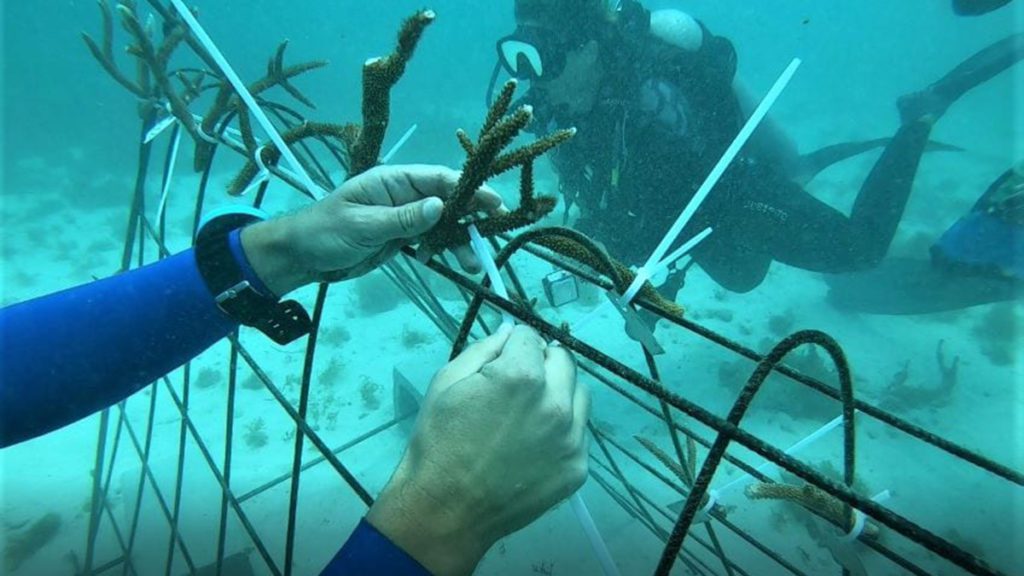A rescue mission is underway to save Barbados’ coral reefs, which have been impacted by a range of climate-related and other hazards.
Recent studies conducted by the Coastal Zone Management Unit and Barbados’ Centre for Resource Management and Environmental Studies (CERMES) reveal that 75 percent of the island’s near-shore reefs were in very poor condition, while 40 percent of the bank reefs were stressed.
“There are no areas of very good reef– none,” said Kirk Humphrey, the country’s Minister of Maritime Affairs. “All around Barbados you cannot find a spot with very good reef. It has also told us that herbivorous fish are on the decline in a number of areas.
“There is a need to do something,” Humphrey stated.
The minister further outlined that the reef was also impacted by the volcanic ash, following the eruption of the La Soufriere volcano in St. Vincent and the Grenadines in April.
The Ministry of Maritime Affairs and the Blue Economy are working to correct these issues.
To mark the recent World Oceans Day under the theme: The Ocean: Life and Livelihoods, the Ministry participated in an initiative to plant 50 staghorn corals at Carlisle Bay, which involved the CZMU, officials from Barbados Blue, divers, fishermen and marine biologists.
Minister Humphrey and the 14-member team set sail from the Shallow Draught on board the Mojito en route to Carlisle Bay to replant the coral there, for the first time in the island’s history.
“Some people may ask how is the coral going to fare,” Humphrey noted. “The coral started here…I believe the coral will do very well.”
The study carried out on the reefs indicates that it would take more than replanting coral to save the island’s reefs.
Minister Humphrey and a team of officials, including Director of the CZMU, Dr. Leo Brewster; Acting Chief Fisheries Officer, Joyce Leslie and the Director of CERMES, Dr. Patrick McConney, have outlined a series of initiatives designed to save the coral reefs and marine ecosystems and protect them from further damage.
These initiatives, once implemented, will see changes in the way fisherfolk and other users of the marine space operate within that environment.
One of the changes outlined by the Minister is that cruise ships would no longer be permitted to anchor on the west coast, in an effort to protect the coral reef and very sensitive marine ecosystems in that space.
However, at Carlisle Bay, known as a traditional anchor spot, cruise vessels will be allowed to anchor, in “exceptional circumstances,” following consultation with authorities.
Humphrey pointed out that cruise ships using a dynamic positioning system, which allowed them to remain stable without dropping anchor, would be allowed to go to the west coast.
“From Government’s side, there must be more frequent and coordinated monitoring of the cruise vessels,” he said. “We will work closer with the Port [and] the [Barbados] Coast Guard.”
“We will monitor our marine traffic,” Humphrey continued. “There is going to be much closer monitoring, not only of cruise ships, but all vessels on the west coast.The important thing is, we are having conversations with our partners [and] the Port will be engaged in the conversations.”
In addition, the CZMU has developed a flyer to give guidance on clearance procedures and anchorage areas for all vessels arriving in Carlisle Bay.
Barbados is also about to embark on a $4.5 million marine spatial plan through ongoing work with the Nature Conservancy.
“That would allow us to plan out the marine space, in terms of timing and what happens where, and allows us to make proper use of the space,” Humphrey said, noting that Barbados would be the first country in the region to do such a plan.
